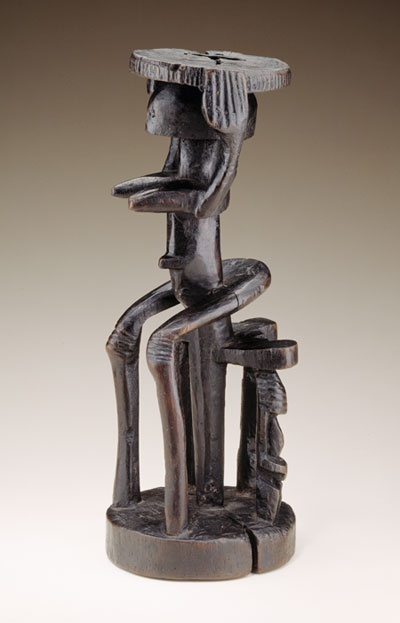Exhibit:
Introduction | Ancient sky-watchers | Celestial deities in the time of the pharaohs | Cosmic connectors | The sun at which one cannot stare | Without the moon, there would be no life | Lunar enlightenment | Cosmic models | Celestial guidance | A universe of possibilities |
Education:
Astronomy in Africa | ArtLAB+ interviews | Star sounds | Cosmos diary (blog) | African Cosmos (Twitter) | Family guide | A Galaxy of Activities | Teacher Lesson Plans | Sons of the Moon DVD
In the origin myths of many African societies, the first beings descended from the sky, a world with powerful spirits and a creator god. Believed to have special abilities, these first ancestors founded communities and served as connectors between the realms of earth and sky.
Tall plank masks, such as those made by the Dogon peoples of Mali and the Bwa of Burkina Faso, seemingly reach to the heavens as a way to bridge earth and sky.
Look closely at the masks, stools, and figure carvings to identify how their forms reflect their functions as "cosmic connectors."
Tall plank masks, such as those made by the Dogon peoples of Mali and the Bwa of Burkina Faso, seemingly reach to the heavens as a way to bridge earth and sky.
Look closely at the masks, stools, and figure carvings to identify how their forms reflect their functions as "cosmic connectors."

Dogon sirige masks in performance
Mali, 2001
Photograph by Anne Rogers
Mali, 2001
Photograph by Anne Rogers


